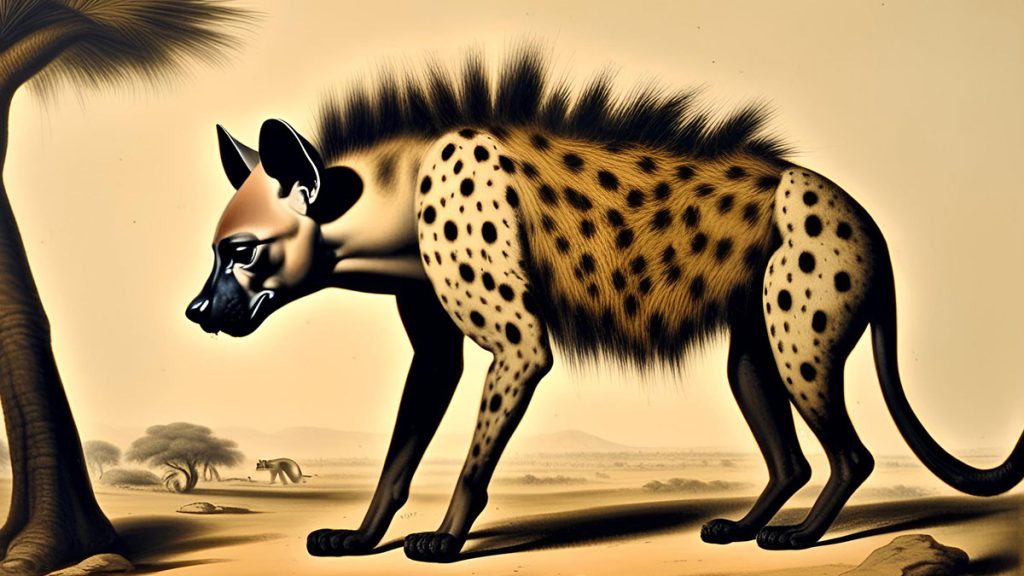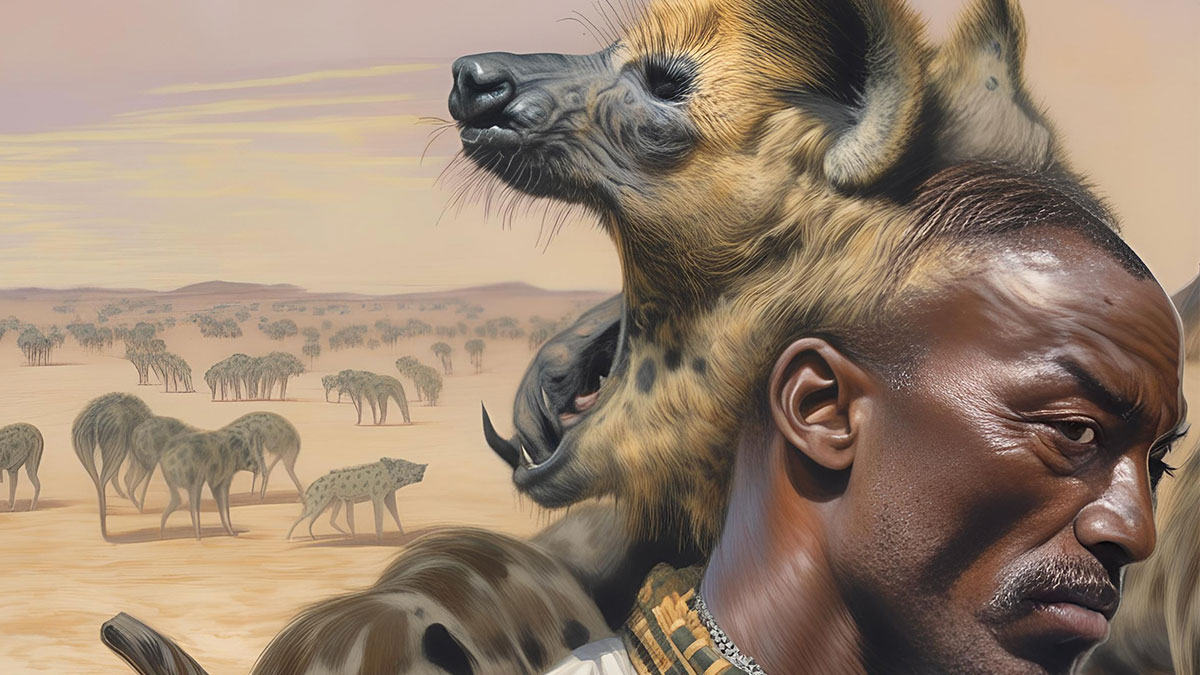The Kishi is a monstrous two-headed or two-faced creature that resides in the hills of Angola. The malevolent beings appear human from the front, but on the back of their heads is the face of a ferocious, snarling hyena.
When near humans, the Kishas hide their hyena faces and appear to others as attractive, handsome young men. They come across as suave, sophisticated, smooth talkers who can be very persuasive. Unfortunately, this trick is used to lure young women away from their villages to be eaten. A Kisha will hide its hyena face by covering it with long hair or a headdress and enter a town to seduce a young woman. He will attend public dances pretending to look for a potential wife or girlfriend.
Once a Kisha has lured or abducted its prey, it will take her to a secluded location where the monster’s true identity and snarling hyena face will be revealed. It will torment and torture the poor woman for as long as possible before eating her. This is because the creature gains sustenance and power from the woman’s fear as well as from eating her flesh.

In addition to being particularly cunning, the Kishis are often described as brave and resourceful. Their jaws are very powerful, and once locked on their prey, it is nearly impossible to prise them open. The creatures are also physically strong, meaning one-on-one combat will likely end in defeat. However, they are not indestructible and can be defeated without magic; for example, they can be killed with fire.
The legend of three girls and a group of Kishis
According to one story, one day, three young sisters decided to explore the territory beyond the boundaries of their village despite knowing it was dangerous. The girls crossed a river into a hilly region and made for a house they spotted in the distance. A large group of Kishis was already watching the three girls.
According to the legend, the Kishis prepared for the girls’ arrival by wearing their finest clothes and concealing their hyena faces behind long hair. They then greeted their prey by inviting them with the offer of food. The youngest of the sisters was suspicious and refused to eat the food. After dinner, the girls were offered a room to sleep in. However, the youngest sister said, “I have seen their other faces. They will surely eat us. We must go now!” As they fled, they saw the house go up in flames. Apparently, the Kishis had hoped to roast the girls in the house.
Unfortunately, the girls were not yet out of danger. On arriving at the river, they found it impassable after heavy rain during the night. The Kishis had pursued them, and the girls were forced to climb a tree to stay out of harm’s way. The Kishis now made no attempt to hide their true identity and paced at the bottom of the tree, snarling at the girls. The youngest girl spotted an eagle circling above the tree and offered it a chicken to take the sisters to safety. The eagle carried the youngest to safety first. The second girl was too heavy for the eagle, plunged into the river, and was swept away. Finally, the last sister fell out of the tree and was devoured by the Kishis.
Always be wary of attractive young men who could be Kishis
The moral of the story is clear. One should not travel far beyond the boundaries of their homestead, and if they do, they should be as wise as the younger sister and not be too trusting of strange men or eat their food.
A poem titled The Legend of the Kishi from Antoine Bandele’s book The Kishi reads:
Be wary of handsome men, To us our mother once said. Don’t forget Ife who was lost to the rocks. In love with a man’s charm and flowing locs. But tricked she was, deceived right and proper. Oh yes, that man was a real heart stopper. No man at all was he, but a demon sharp and sly. Behind his head hid a beast. No one heard her cry.
According to the legends of the Ambundu tribe of modern-day Angola, their cultural leader and hero was killed by a Kishi creature.
References
Bandele, Antoine. “The Kishi.” Self-published, (2018). Accessed July 26, 2024.
Bane, Theresa. “Encyclopedia of Beasts and Monsters in Myth, Legend and Folklore.” Pub.: McFarland, Incorporated, (2016). Accessed July 26, 2024.
Mack, Carol and Dinah. “A Field Guide to Demons, Fairies, Fallen Angels and Other Subversive Spirits.” Pub.: Henry Holt and Company, (1999). Accessed July 26, 2024.
